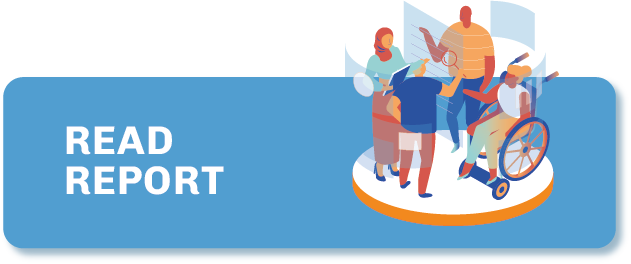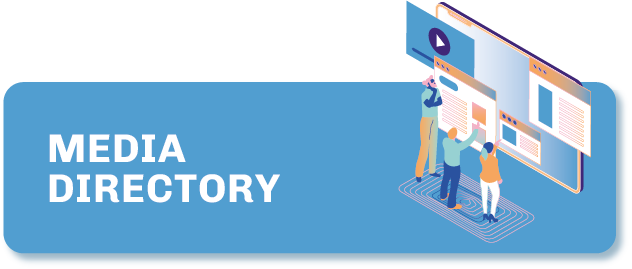The Netherlands
The Netherlands has a relatively wide range of independent digital native media organisations. The majority of these platforms were created in the aftermath of the 2009 financial crisis, when newspaper revenue from advertising and paid memberships decreased. Media leaders discerned unmet needs both in terms of journalistic techniques and coverage, as many regional and local communities felt underserved by the established media.
There are two main trends when examining the independent digital media landscape of the Netherlands: firstly, platforms focusing on in-depth longform (investigative) journalism and, secondly, an increasing number of outlets serving a specific local community whose population deems itself overlooked by mainstream outlets.
An important remark to make early on is that the independent digital native news media sector, though increasing in numbers and scope, still makes up a relatively small share of overall news consumption in the Netherlands, which only makes sense – many of these digital titles do not aim to serve as an alternative to traditional media, but intend to offer an addition to regular news channels and cover ground that otherwise remains uncharted.
GENERAL INFORMATION
Press
freedom
ranking
Internet
penetration
POPULATION
Media organisations
in the Directory
TYPE OF COVERAGE

TYPE OF ORGANISATION

GENDER OF FOUNDERS

Press freedom
Noteworthy – and alarming – when studying recent developments in the Dutch media sector is the country’s sudden drop on Reporters Without Borders’ Press Freedom Index, from sixth place in 2021 to 28th place in 2022. This relatively poor ranking is unprecedented; the Netherlands has always been in the top 10 ever since the creation of the index in 2002.
Despite the active protection of press freedom by the state and the usually favourable conditions for independent journalism, reporters have noticed a worsening working climate during the last year or two. Public opinion regarding, for example, Covid-19 restrictions and immigration has become incrementally polarised, which in turn has sparked an increase in verbal and physical aggression, as noted by the Reuters Institute for the Study of Journalism in its Digital News Report 2022. For example, following attacks on journalists by activists protesting Covid-19 restrictions, public broadcaster NOS decided to remove its logos from vans to protect its employees.
The ongoing dangers of organised crime have resulted in the police protection of several journalists nationwide, especially in the aftermath of the assassination of crime reporter Peter R. de Vries in July 2021. Physical attacks against reporters are usually prosecuted in the Netherlands. Still, overall trust in the media is relatively high, notes the Reuters Institute report.
Market structure and dominance
The news market in the Netherlands is, firstly, characterised by a strong public service broadcaster called the Nederlandse Publieke Omroep (NPO), of which the NOS is the leading news brand.
The Dutch newspaper landscape, both print and online, has a highly concentrated ownership, with two Belgian companies overseeing the great majority of outlets: DPG Media Group (NU.nl, AD, De Volkskrant, Trouw) and Mediahuis (De Telegraaf, NRC). Therefore, despite the variety of platforms, and few limits on the spread of information and opinion, there is some concern about the growing concentration of economic power.
The digital news market is still dominated by the (offline) established news outlets, with the popular website NU.nl being the exception to the rule. Apart from NU.nl, public broadcaster NOS and the legacy titles AD and De Telegraaf have a reach of over five million unique visitors per month, followed by the online editions of the established titles NRC, De Volkskrant, RTLnieuws and Trouw, according to Mediamonitor’s Digital News Report Nederland 2022.
How media is funded
The Dutch public broadcasting infrastructure is administered and funded by the Nederlandse Publieke Omroep (NPO), which in turn is financed by the Ministry of Education, Culture and Science. Under this system, NOS (news, parliamentary reporting and sports) and NTR (cultural, educational, children’s, and ethnic programming) both have a privileged status, and their funding is protected. The NPO additionally awards five-year renewable contracts to several member-based public broadcasters running the other public TV and radio channels. Organisations representing new political or cultural divisions can apply, with a minimum of 50,000 members as the most important criterion to ensure public funding and guaranteed airtime, according to the Reuters Institute’s report.
Based on the same report, in the non-public commercial sector the two Belgian publishers that dominate the Dutch news market (Mediahuis and DPG Media) saw their revenues increase over the last year, while the digital advertising market recovered from the initial pandemic slump. Willingness to pay for online news remains at 17%, adds the report, but some companies, like NRC and De Volkskrant, have reported significant progress in the number of digital subscriptions.
Fourteen profiles of digital native media organisations from the Netherlands are included in the directory. This includes eight profiles based on interviews and six profiles based on desk research.
There is a range of valuable online media organisations in the Netherlands as a whole, including smaller outlets that have more limited outreach. However, the fact that these news outlets do not always disseminate their content and information to a large audience says little about how important they are for the community they serve.
As mentioned above, independent online platforms have been successful in focusing on niches bypassed by traditional media. Two obvious ones are, firstly, journalistic techniques, and, secondly, the geographical area of coverage, with multiple media leaders commenting on the former lacunae of in-depth or investigative journalism, on the one hand, and thorough, local journalism on the other.
Noticeably, several media leaders of the platforms included in the Project Oasis directory remark on the “impoverishment of journalism” in the wake of the global financial crisis. This has time and again been named as one of the main grounds for starting an independent digital outlet.
Hilde Westerink, the editor-in-chief at VersBeton, a local publication from the city of Rotterdam, puts it like this: “In the aftermath of the financial crisis, journalism seemed to be on the backburner. Business models were under pressure, NRC [an established Dutch newspaper] moved its offices to Amsterdam, and there was no investigative desk left in the city to speak of. We were idealistic inhabitants in our 20s at the time, who were of the opinion that Rotterdam deserved to be critically regarded. If no one else does it, we thought, we’ll do it ourselves.”
Harmen Zijp, founder of De Stadsbron, says: “All reporting that takes time and costs a lot of money is scantily covered by the mainstream media. So that’s what we wanted to do: that hardest thing, investigative journalism.”
Also worth mentioning are the media leaders’ incentives: rarely, if ever, are they driven by economic objectives. Their mission is usually idealistic; they derive their platform’s raison d’être from serving democracy, or giving a voice to the otherwise unheard. As Follow the Money’s co-founder Eric Smit says: “We have narrowed down our mission to a brief statement. We practise truth-finding in the service of society.”
Perhaps it is in the nature of the profession to be driven by idealism rather than by financial gain. It turns out that for many of the independent platforms, it is no mean feat to become truly financially sustainable. A number of outlets rely on a changing constellation of subsidies, gifts, revenue generated by advertising or memberships, and services provided to third parties in the form of, for example, content production, training or seminars. For many, financial stability is a continuous effort – or struggle if you will – but these media leaders hang on because they strongly believe in their platforms’ value.
Last updated: January 2023
CREDIT FOR STATISTICS: Press Freedom statistics, RSF Press Freedom Index 2022; Internet penetration and population statistics, from Internet World Stats

